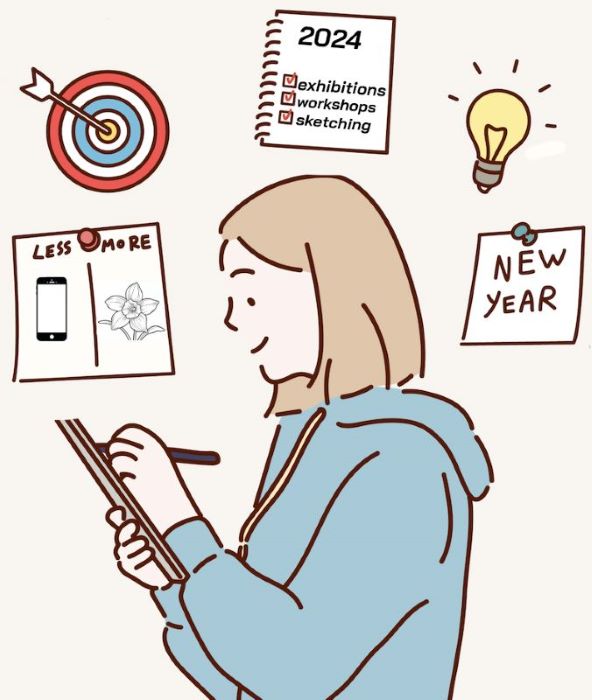It’s the first week of the new year and, predictably, there’s all the usual talk about resolutions. However, resolutions are just a statement of intent; without specific goals to give effect to the resolutions, intent is unlikely to be implemented.
For example, in a botanical art context, you may start by generally resolving to “be more active.” You may then enlarge on that a bit by deciding that “more active” means that you’d like to, say, finish unfinished works, explore new subjects to paint, attend more workshops, and enter exhibitions.
But that’s only the start. Little is going to be achieved if you don’t then set related goals such as specifically identifying the unfinished works and establishing a plan to tackle them, identify when and how you’re going to search for new subjects, search out workshops and register for them, and research upcoming exhibitions and enter them. These would constitute goals that you can document and revisit regularly to ensure that you stay on track. You’ll probably have to adjust them as time passes and circumstances change, but that’s fine—botanical art is supposed to be a sanctuary of meditative peace, not a source of stress.
So, in three steps . . .
1. Start with resolutions:
Begin by setting broader resolutions that reflect your overarching botanical art aspirations for the year.
2. Translate the resolutions into goals:
Break down your resolutions into manageable goals with specific actions and timelines. Remember though that the idea is to enjoy botanical art, not be stressed by it.
3. Regularly review and adjust the goals:
Regularly assess progress and adjust your goals, as needed. This allows you to reaffirm your resolutions and to stay aligned with your intentions in a way that gives you the meditative joy of botanical art.
May 2024 be a year of inspiration and may it bring you all you’d like from botanical art.

